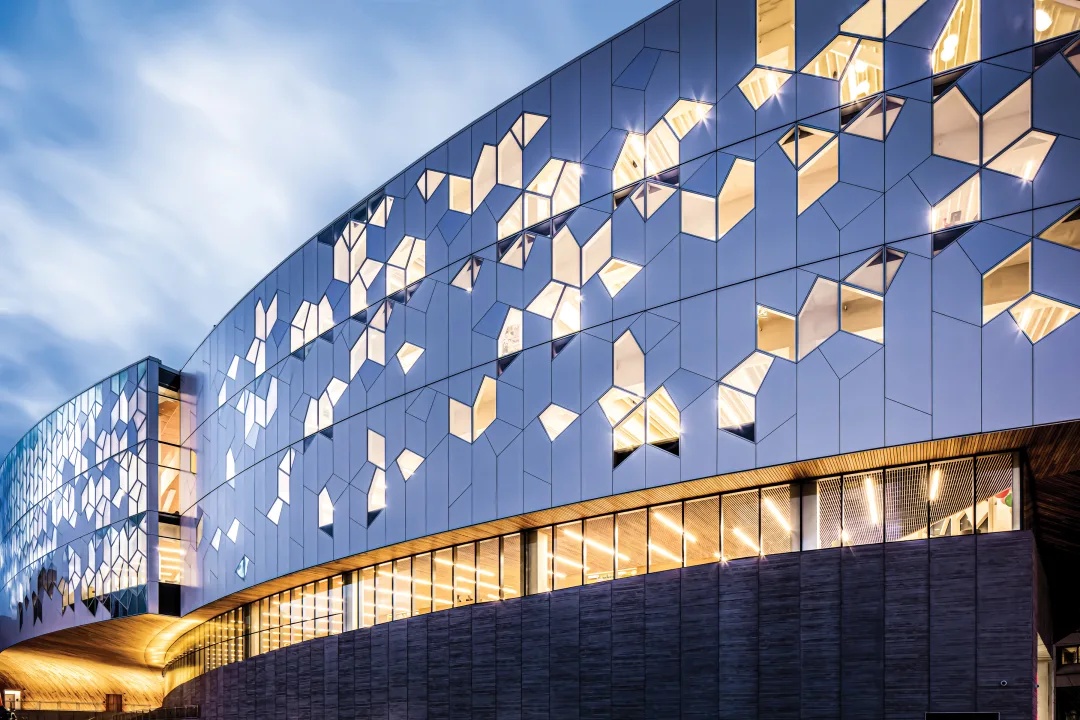Exploring innovative materials has been pivotal in shaping how we construct and design buildings. Among these, composite materials have emerged as a transformative force, revolutionizing the industry's landscape. These materials, made by combining two or more constituent materials with significantly different physical or chemical properties, offer many advantages.
Some common types of composite building materials include concrete, reinforced plastics, cement, steel-reinforced concrete, composite wooden beams, organic/natural fiber composites (e.g., wood-plastic composites), and inorganic composites (e.g., thermoplastics reinforced with fiberglass or metal). The most widely used composites in architecture include granular (reinforced concrete), fiber-reinforced composites (including fabric structures), and carbon fiber laminates (sandwich). These composites allow for the creation of large, light, and highly resistant elements in buildings, the imitation of natural materials with great strength and low weight, and the realization of complex shapes that can resist earthquakes and wind. Let's explore this in more detail.
The Evolution of Composite Materials in Architecture
The historical roots of composite materials in construction stretch back to ancient times witnessed in rudimentary forms like mud bricks reinforced with straw. However, the trajectory of composites in architecture has been redefined by technological advancements and material science innovations, catapulting them into the forefront of architectural innovation.
The Impact of Carbon Fiber Composite Materials
|
Carbon fiber laminates |
|
|
|
|
Carbon fiber tubes |
|
|
Advantages of Composite Materials in Architecture
Strength and Durability
Composite materials in architecture offer exceptional strength and durability due to their amalgamation of diverse components like fiberglass, carbon fibers, and resins. These materials possess high tensile strength, resistance to corrosion, and flexibility in design, making them ideal for architectural applications. Their ability to withstand harsh weather conditions, structural loads, and environmental factors enhances longevity while offering innovative design possibilities, revolutionizing construction with a harmonious blend of robustness and adaptability.
Design Flexibility
One of the most compelling aspects of composite materials is their design versatility. They can be molded into various shapes and forms, allowing architects to express their creativity without compromising structural integrity. This flexibility often leads to iconic, futuristic, and unconventional architectural designs.
Sustainability
In an era increasingly concerned with environmental impact, composite materials shine due to their potential sustainability. Many composites use recycled materials, and their lightweight nature contributes to energy efficiency in transportation and installation, reducing the overall carbon footprint.
Maintenance and Longevity
Composites often require minimal maintenance compared to traditional building materials. Their resistance to degradation from moisture, pests, and chemicals contributes to their longevity, reducing the need for frequent repairs or replacements.
Applications in Modern Architecture
The application of composite materials in contemporary architecture is diverse and continually evolving. Composites have made their mark from facade cladding and roofing to structural elements like beams and columns. Notable structures such as the Burj Khalifa in Dubai and the Guangzhou Opera House in China showcase the prowess of composite materials in realizing ambitious architectural designs.
Future Prospects and Challenges
As architects and engineers delve deeper into this, ongoing research further focuses on enhancing their properties. Challenges remain, including cost-effectiveness, scalability in mass production, and exploring new sustainable raw materials. However, continuous innovations and technological advancements suggest a promising future for composites in architecture.
Composite materials represent a paradigm shift in the architectural landscape, offering a cooperative blend of strength, versatility, sustainability, and aesthetic appeal. Their integration in architecture continues to redefine possibilities, push boundaries, and enable the creation of previously deemed impossible structures. As technology progresses, the synergy between composite materials and architectural innovation promises a future where imagination knows no bounds in shaping our built environment.
Source by- https://www.atoallinks.com/2023/composite-materials-in-architecture/


No comments yet